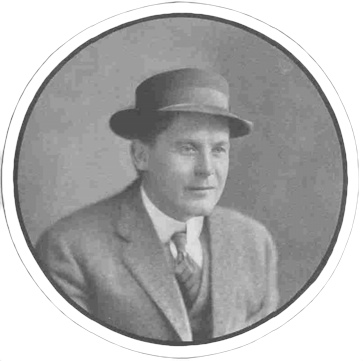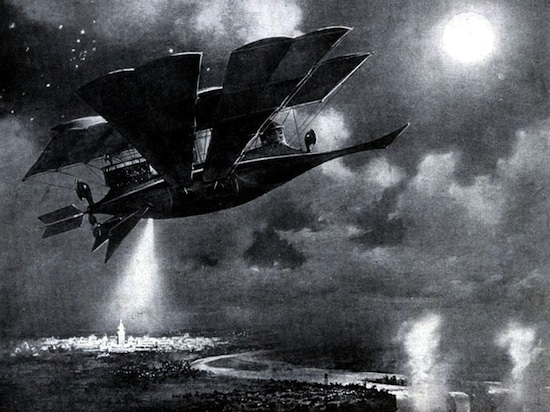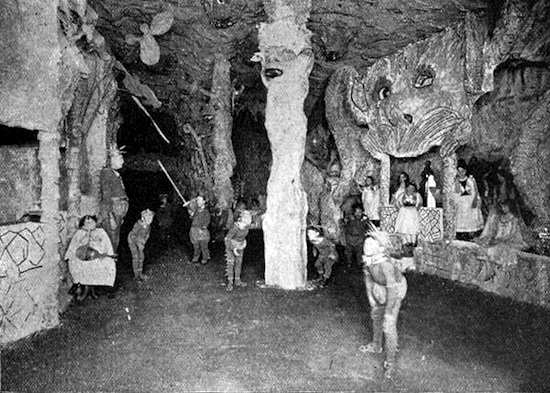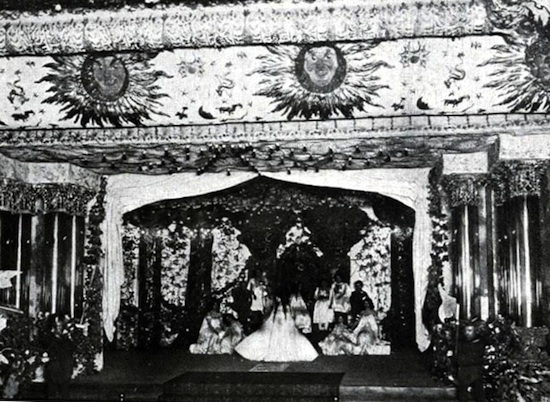
In 1901, Frederic Thompson was a restless architect who was designing buildings for fairs and expositions all over the country. He sought to develop a new form of entertainment that would appeal to the senses and provide the public with an escape from everyday life. His solution was to utilize modern technology (electricity and light bulbs) with machinery and lots of plaster to create what was essentially the first flight simulator. Drawing from many popular stories of the day, Thompson decided to name his attraction “A Trip to the Moon.”

These days, it’s easy for people to dismiss the novelty of flying, but in 1901 flight was merely something out of a science fiction novel to most people, let alone flying to the moon. Similarly, electric lights were a luxury that most simply didn’t have. Using that premise and his knack for showmanship, Thompson spent a then-handsome sum of around $85,000 (over $2M in today’s money) constructing his attraction. The main portion of the ride was a 30-passenger airship that resembled a giant canoe with red wings. It was suspended from the ceiling by a few central steel cables, permitting the ship to rock and swing lightly. The wings were controlled by a pulley system, and small fans were installed on the inside for a wind effect. Adding to the simulation were hundreds of lights and sound effects. Visitors would first gather in an auditorium, where a guide from the “Aerial Navigation Company” would give a small lecture about flying through the air. The passengers would then board the airship Luna and the ride would begin.

To further give the illusion of flight, several painted canvases were cycled past the ship, simulating a takeoff from New York, past Niagara Falls, through the clouds, and eventually into space and then the moon. When the ship completed its voyage, passengers would leave the ship and enter into a labyrinthine lunar cavern carefully crafted with plaster, and encounter a city of moon people called “Selenites.”

Inside the city were gift shops, green cheese samples, and other small attractions. The finale took place inside the palace of the man in the moon, where guests were treated to a stage/light show featuring actors and dancing fountains.

The attraction was housed in an 80 foot tall, 40,000 square foot ornate building, and employed almost 250 people. Thompson later stated that he recouped four times the money he spent during the first summer.
“A Trip to the Moon” was built for the 1901 Buffalo Exposition, and was so wildly successful that it was brought to Coney Island the following year. The ride quickly became the most popular and most lucrative attraction at Coney, and Thompson along with his partner Elmer “Skip” Dundy then used the proceeds from the 1902 season to build Luna Park in 1903. The theme park dazzled with its architecture, thousands of lights, and ability to completely immerse visitors, and “A Trip to the Moon” entertained millions of riders for the next several years. Thompson created several other themed attractions for his park, and was heralded as a master entertainer. For all of his creative genius and ability to entertain, Fred Thompson was also a poor businessman and an alcoholic. After his business partner died in 1907, he struggled on his own. In 1912 he filed for bankruptcy and was forced to hand over Luna Park to his creditors. Frederic Thompson died in 1919 at age 46. His concept of combining escapism with technology, psychology, and grandiosity remains to this day the master blueprint for designers.
Tweet
And yes, there will be more stories coming from the vault...so to speak. Stay tuned.
This article has been archived and is no longer accepting comments.